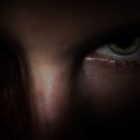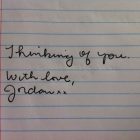Experiments I Should Like Tried at My Own Death
Experiments I Should Like Tried at My Own Death
Caryl Pagel
Factory Hollow Press, September 2012
78 pages
$15.00
Editor’s note: P. Scott Stanfield holds a Ph.D. in English and teaches literature at Nebraska Wesleyan University. Recently, I challenged him to see how many references to other works and artists he could make in a single 500-word review. He gets one point for each, or two for any he hasn’t used in a previous column. Last month’s score: 20; this month’s score: 21. —Andrew Ladd, Blog Editor
A seeker of fossils is a scientist, but what about a seeker of ghosts? No way, most of us would say. “Okay,” the ghost hunters might protest, “we do not belong to prestigious institutions or attract foundation grants—but are we not methodical, do we not document carefully all we do? Yes, our findings are ignored by the scientific establishment, but who truly represents the spirit of free, open-minded inquiry? Them, or us?”
Caryl Pagel’s Experiments I Should Like Tried at My Own Death inhabits just this kind of twilit world, where the broad daylight of orderly modern science entangles itself with the old shadowy world of myth, legend, and superstition.
Titles such as “Location of the Soul” and “Photographs of Ghosts” remind us of the Victorian preoccupation (Elizabeth Barrett Browning, William James, Arthur Conan Doyle, William Butler Yeats) with the possibility that new technology might be able to detect essences so subtle as to be virtually immaterial. Drawing on the archives of the American Society for Psychical Research (founded 1884), Pagel gives quick, lightning-lit glimpses into a world where the subject of an experiment “floats out an open window & into the evening” and later reads that her body “circled around the building & returned through the opposite pane.” “Tell me how that is possible,” she asks; “I could not see it but I was there.”
At other moments, Experiments I Should Like Tried at My Own Death evokes the early modern cosmos of Robert Fludd, Thomas Browne, or Robert Burton, in a mélange of observed fact, received tradition, and free-wheeling metaphysical speculation. The “Botched Bestiary,” six installments from which are spaced throughout the volume, juxtaposes statements about various animals made by (for example) Thoreau, Ray Bradbury, Annie Proulx, and Vicki Hearne, substituting the phrase “the body” for the name of the animal, and thus generating a kind of through-the-looking-glass zoology textbook. A similar impulse gives us the poem “Common Plant & Animal Names (Existing & Not Existing).” Here is the entry for “R”: “Razorblade, Right Whale, Rich-On-Style, Run-Them-Over. Rubber Chicken, Rumormill.”
Experiments I Should Like Tried at My Own Death is consistently witty, but it can unsettle as well, and even frighten. Is the storm of “Storm” a physical storm or a psychic one? Is the poem suggesting there may be no real distinction?
a rage not yours
roiling through the evening’s close—
clothed as clouds as
a cumulous cauldron ominous
counsel Experience the door warped
& creaking Experience your own hand
trembling your own heart
thundering your own mind weaving a thatched veil—
a divination: the possibility
of grand
amendment
The spoon
is too loud for the teacup
Pagel’s volume explores the soft boundary between the verifiable and ineffable. She shows us science through a steam-punk lens: instruments of brass rather than stainless steel, embroidered vests rather than white lab coats, ledgers with marbled endpapers rather than computer screens—an enterprise not about grants and tenure but about facing chthonic powers.



